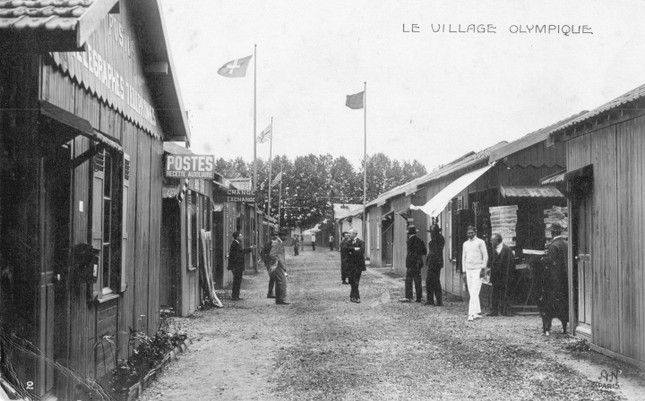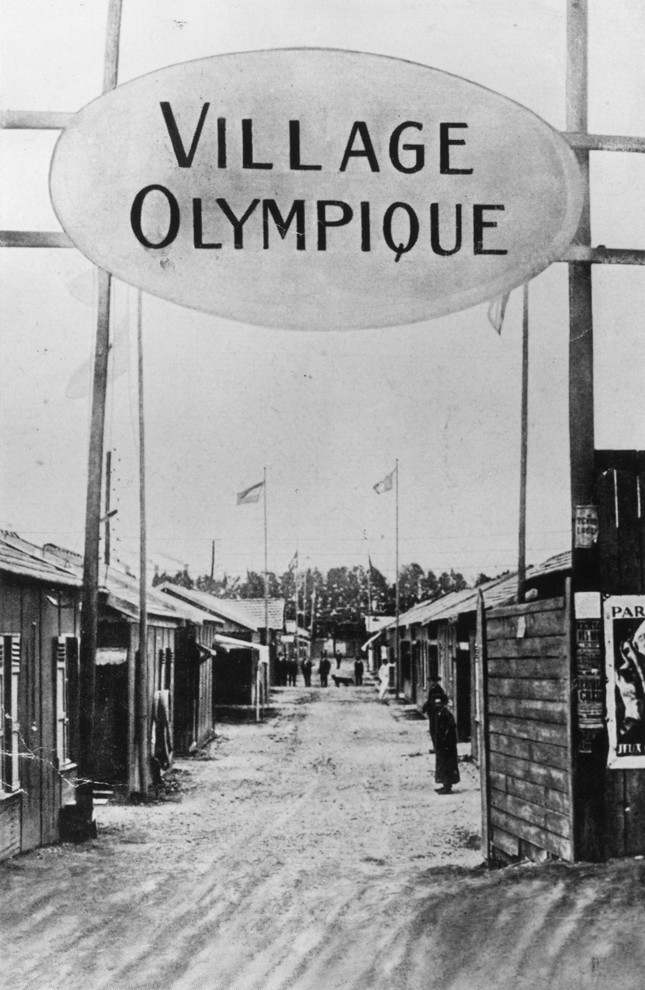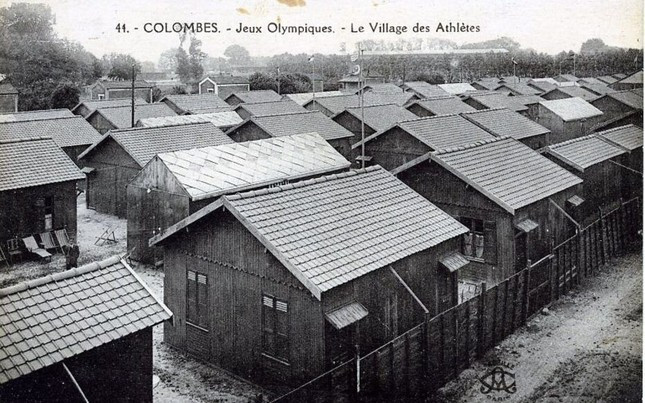The Olympic Village is an indispensable part of the Olympic Games. However, it only came into existence at the 8th Olympic Games, when it was held in Paris, France exactly 100 years ago.
 |
Before the 1924 Paris Olympics, athletes participating in the Games were housed in hotels and motels scattered throughout the host city. This was very expensive and logistically difficult.
At the meeting of the Olympic Executive Committee held in Rome (Italy) in 1923, the issue of accommodation for sports delegations was clarified. Accordingly, the host cities were responsible for providing accommodation and meals for athletes every day at a fixed price. The costs were borne by the sports delegations, and they were also responsible for any problems caused by the athletes.
Since the hosting of the 1924 Olympics, the French government has been enthusiastically supporting the 1924 Olympics, generously providing a budget of 20 million francs and a new stadium for the project. Therefore, they are also willing to set up an Olympic village on Avenue Valmy, Colombes in the Hauts-de-Seine department, a suburb west of Paris. This place is very close to the main Colombes stadium (now Stade Yves-du-Manoir) for convenient transportation.
 |
| The first Olympic village appeared at the 1924 Olympics in France. |
Initially, the decision to build the Olympic Village in Colombes was met with much criticism, due to the risk of flooding due to its proximity to the Seine. Fortunately, this concern was not borne out. However, the ground was quite muddy, creating a rather unsightly setting for the village of 66 wooden houses (in Plan B, people planned to use railway carriages for accommodation).
Each house has five rooms, each accommodating two or three athletes. It also has a currency exchange, a hairdresser, a post office, a newspaper kiosk, a laundry service and a valuables storage facility. Each house has a shared sink and shower. For meals, everyone goes to the common dining room, where they are served breakfast and two hot meals a day, along with mineral water, beer or half a bottle of wine.
On paper, everything looked fine. But today, the Olympic Village was not all-male. The 135 female athletes, who made up just 4 percent of the 3,089 athletes who competed in the 1924 Games, were forced to stay in hotels in Paris.
 |
| The 1924 Olympic Village was made up of wooden houses on wet ground. |
 |
| These houses were demolished in August 1924, less than a month after the Olympics ended. |
Not all teams stay in the Olympic Village. The United States, for example, chose the Rocquencourt Castle in Yvelines. Only a few unlucky athletes have had to move into the village because the castle was full.
Johnny Weissmuller was one of them. He later won four swimming medals, including a gold in the 100-meter freestyle. By the way, after retiring, Weissmuller became a Hollywood star, playing Tarzan in twelve feature films between 1932 and 1948.
In addition, some economically disadvantaged delegations would be housed in a secondary village, which was a barracks borrowed from the Ministry of War. The fixed price in the Olympic village was 30 francs for accommodation and 25 francs for three meals per person per day. In total, for the 25 days of the 1924 Olympics, the cost per person was 750 francs, equivalent to 790 euros today (about 21.6 million VND).
 |
| Japanese athletes inside a house in the 1924 Olympic village |
Whether the price was worth the athletes’ experience is hard to say. The daily newspaper Le Siecle said otherwise. It described the cabins as wartime tents, and the meals, though tailored to each group’s tastes, were terrible. Perhaps that was why the British team brought their own chef, even though France is hailed as the cultural cradle of European cuisine.
Anyway, it's all history. It's a shame that the Olympic Village was demolished right after the 1924 Olympics. There's no trace of it left except for photographs.
100 years later, another Olympic village is being built for the 2024 Games. Located in Saint-Denis, the meeting point of three northern suburbs of Paris, it will provide modern housing for nearly 15,000 athletes and serve up to 60,000 meals a day at peak times. After the Olympics, the village will become a new residential area, providing 2,800 apartments for about 6,000 people, of which 25% will be social housing, alongside recreational, commercial, community and educational facilities with 6,000 jobs.
TB (according to Tien Phong)